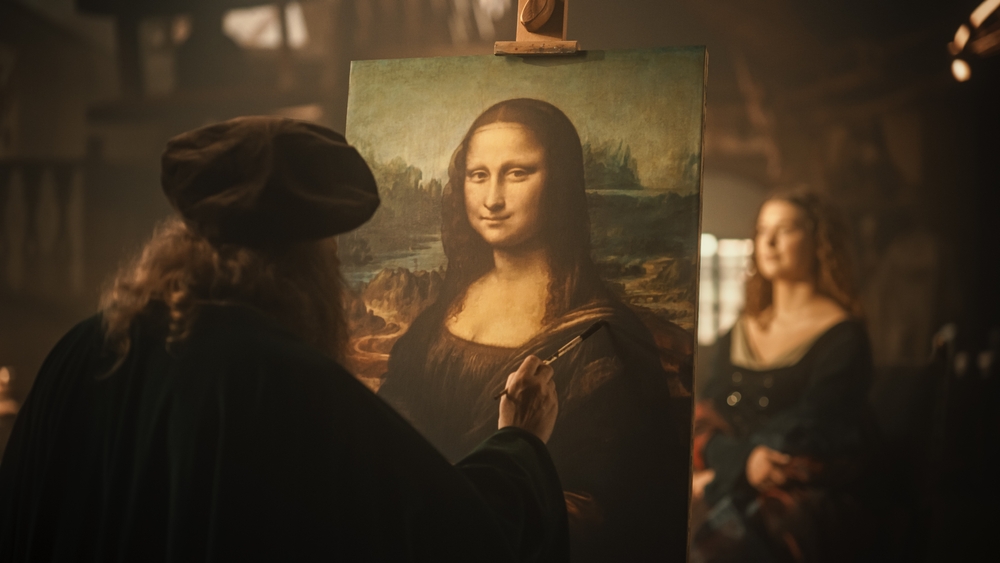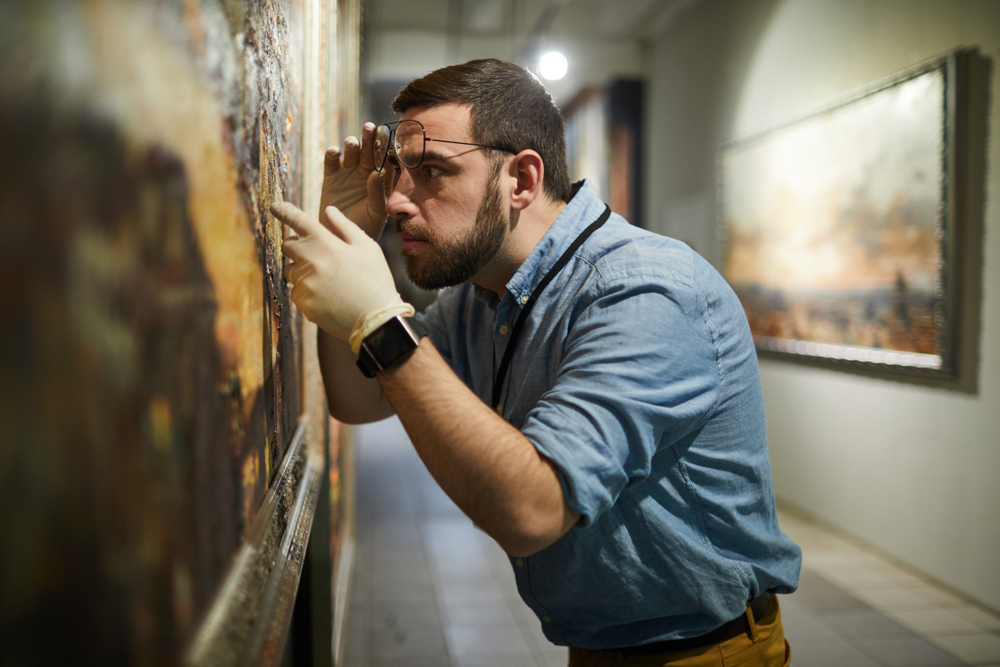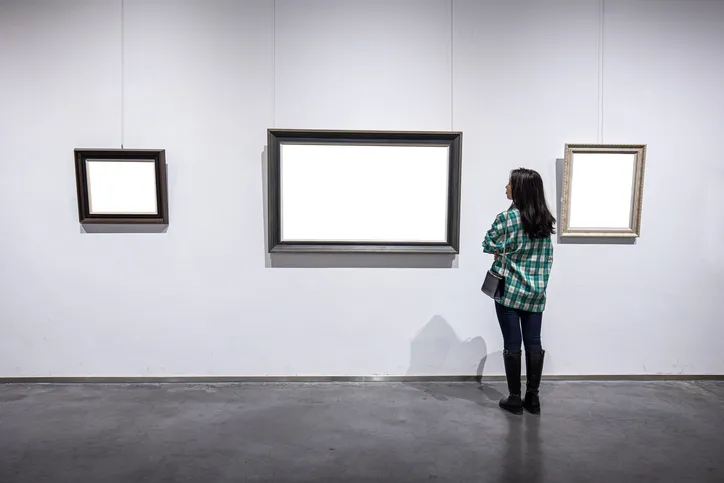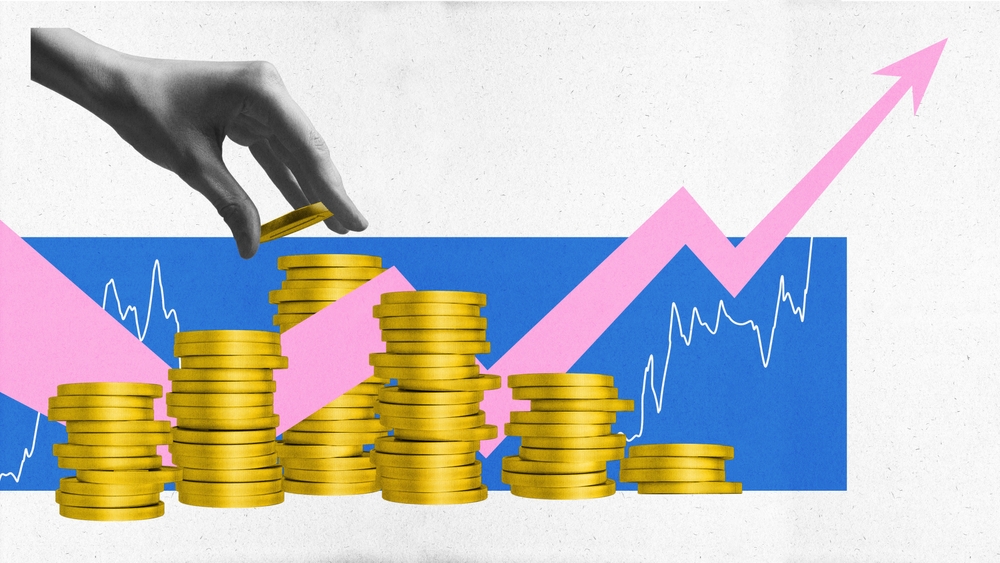The art world is a mysterious realm where the value of an artist’s work can fluctuate drastically based on various factors. One of the most intriguing phenomena is how some artists become more valuable after their passing. While it may sound a bit morbid, there are fascinating reasons behind why deceased artists often fetch higher prices and recognition than when they were alive. Let’s dive into this curious reality and explore twelve reasons why it happens.
1. Limited Supply of Artwork

Once an artist passes away, their body of work becomes finite, which can significantly increase demand. According to Artsy, this scarcity principle plays a crucial role in driving up prices because collectors and investors know no more pieces will be created. This limited supply often creates urgency among buyers who want to own a piece of the artist’s legacy before it becomes unattainable. Galleries and auction houses may also highlight this finite nature in promotions, which can further spike interest and competition among potential buyers.
Over time, this scarcity can lead to a reassessment of the artist’s contribution to art history, often elevating their status. While alive, some artists may not receive the attention or valuation they deserve due to market trends or overshadowing contemporaries. After their death, the reevaluation of their work in the context of art history can bring renewed interest and higher valuations. In essence, the finite nature of their work can lead to an everlasting legacy that appreciates over time.
2. Romanticized Legacy

There’s a romantic notion tied to artists who leave behind a legacy unfinished by their death. The idea of a tortured genius or an artist who died too soon adds an aura of mystique and intrigue to their story. This romanticization can lead to increased media attention, documentaries, and retrospectives that elevate the artist’s profile posthumously. The public’s fascination with their life story, struggles, and untimely end can translate into a heightened interest in their works.
Furthermore, the narratives built around their lives contribute to a posthumous rebranding of their art. Fans and collectors often feel a connection to these stories, making the artwork more personal and desirable. The mythos surrounding an artist’s life can amplify their significance, leading to their work being seen as more profound or valuable. In this way, the romanticized legacy becomes a powerful tool in enhancing the value of their art in the market.
3. Re-evaluation by Art Critics

After an artist’s death, art critics and historians often revisit their work with fresh eyes, leading to a re-evaluation of its significance. This renewed scrutiny can uncover overlooked aspects or themes in their work that were not appreciated during their lifetime. According to The Art Newspaper, this critical reassessment can significantly impact the perceived importance of an artist’s work, thereby raising its market value. Critics may also draw connections between the artist’s work and broader art movements, further solidifying their place in art history.
As critics publish their findings, public opinion about the artist can shift, often resulting in increased demand for their work. Galleries and museums may also organize exhibitions that highlight these newfound aspects, attracting a new audience to the artist’s oeuvre. This process of discovery and reassessment can transform an artist from a marginal figure to a celebrated icon in the art world. In essence, the posthumous critical re-evaluation can serve as a catalyst for elevating an artist’s market value and legacy.
4. Absence of Future Artistic Evolution

When an artist is alive, their style and subject matter can evolve, which may or may not align with current market trends. The unpredictability of an artist’s future work can deter certain collectors who prefer consistency. However, according to RedDotBlog, once an artist passes away, their artistic output is fixed, and buyers have a complete understanding of the artist’s style and impact. This stability allows collectors to invest with confidence, knowing that there won’t be any future deviations that might devalue their collection.
The lack of future evolution can also lead to a solidified brand identity, making it easier for galleries to market the artist’s work. Collectors and investors often look for artists whose work has a clear and consistent narrative, which becomes feasible posthumously. This fixed nature of their oeuvre enables a clear historical context, allowing art historians and critics to place them definitively within art movements or periods. As a result, the predictability of an artist’s body of work after their death can enhance their value in the eyes of collectors and the market.
5. Memorial Exhibitions and Retrospectives

Following an artist’s death, galleries and museums often organize exhibitions and retrospectives to celebrate their life’s work. These events can reignite interest in the artist and bring their work to a new audience. The increased exposure from these exhibitions can elevate the artist’s profile, both critically and commercially. When curated well, these shows can reshape public perception, highlighting the artist’s contributions and influence on the art world.
Such exhibitions often attract media coverage, which can further amplify interest and drive up prices. They also provide an opportunity for collectors to see the artist’s work in a comprehensive context, often leading to increased demand. The narrative and context provided by these retrospectives can enhance the perceived value of the artist’s work, making it more desirable to collectors. In this way, memorial exhibitions can serve as a powerful posthumous marketing tool that contributes to an artist’s increased market value.
6. Increase in Collectors’ Emotional Investment

The death of an artist can evoke strong emotions, leading to a deeper connection between the artist’s work and its audience. Collectors who resonate with the artist’s story or themes may feel a stronger urge to acquire pieces as a way to preserve the artist’s legacy. This emotional investment can often translate into bidding wars at auctions, driving up the prices of their work. The sentimental value associated with an artist’s story can become a significant factor in the art’s market value.
Additionally, owning a piece of art by a deceased artist can feel like owning a piece of history, which enhances its appeal. Collectors may feel a sense of responsibility to preserve the artist’s legacy, further increasing their willingness to invest in the work. This emotional connection can also lead to a more personal and meaningful collection, as each piece carries the weight of the artist’s life and story. Ultimately, the emotional investment by collectors can significantly contribute to the increased value of an artist’s work posthumously.
7. Market Dynamics and Speculation

The art market is often influenced by speculation, and the death of an artist can act as a trigger for investors to buy in anticipation of rising prices. With the artist no longer able to produce new work, the market often responds with heightened interest and activity. Speculators may purchase works en masse, hoping to capitalize on future appreciation as the artist’s legacy solidifies. This speculative buying can drive up prices quickly, creating a surge in market value for the artist’s work.
Moreover, market dynamics can shift when an artist dies, as collectors and investors reassess the artist’s contribution to art history. The combination of limited supply and increased demand can lead to a competitive market environment, where prices soar. This speculation is not just about financial gain but often reflects a belief in the enduring cultural significance of the artist’s work. In this way, the anticipation of future value appreciation can significantly impact the posthumous market value of an artist’s work.
8. Influence of Art Advisors and Consultants

Art advisors and consultants play a significant role in shaping the market perception of an artist’s work after their death. These professionals often guide collectors and investors on which artists are worth investing in, based on potential future appreciation. The endorsement of art advisors can lead to increased interest and confidence in an artist’s work. Their insights and recommendations can sway the market, making certain artists more desirable to collectors.
Furthermore, art advisors often have access to exclusive networks and information, allowing them to identify trends and opportunities that may not be apparent to the general public. This insider perspective can lead to strategic acquisitions that enhance an artist’s market value. The influence of these advisors can also extend to galleries and museums, impacting exhibition choices and promotional efforts. As a result, the role of art advisors and consultants can be a powerful factor in the posthumous appreciation of an artist’s work.
9. Cultural Shifts and Societal Trends

Cultural shifts and societal trends can also play a significant role in the posthumous appreciation of an artist’s work. As society evolves, certain themes or styles that were once overlooked can gain relevance, leading to a renewed interest in the artist. This can result in a re-examination of their work in the context of contemporary issues or movements. The growing recognition of diverse voices and perspectives in the art world can also contribute to the increased valuation of artists who were previously marginalized.
Moreover, as cultural narratives shift, the stories and experiences depicted in an artist’s work may resonate more deeply with contemporary audiences. This alignment with current societal values can enhance the perceived importance and relevance of the artist’s oeuvre. The evolving cultural context can thus serve as a catalyst for the revaluation and appreciation of an artist’s work posthumously. In this way, cultural shifts and societal trends can significantly impact the market value of an artist’s work after their death.
10. The Role of Auction Houses

Auction houses play a crucial role in setting the market value for an artist’s work, especially after their death. These institutions often have the power to create hype and excitement around an auction, attracting global attention. High-profile sales and record-breaking prices can set new benchmarks for the artist’s work, increasing its desirability and market value. Auction houses also have the resources to market and promote an artist’s work extensively, amplifying their reach and impact.
Additionally, the prestige associated with selling a work at a renowned auction house can enhance the perceived value of the artist’s work. Buyers may be willing to pay a premium for pieces sold in such esteemed venues, believing it adds to the art’s provenance and significance. The competitive nature of auctions can also drive up prices, as bidders vie for ownership of limited works. Thus, auction houses serve as powerful platforms that can significantly influence the posthumous market value of an artist’s work.
11. Impact of Estate Management

The management of an artist’s estate can significantly influence the posthumous value of their work. A well-managed estate can ensure that the artist’s legacy is preserved, protected, and promoted effectively. This includes overseeing the authentication, cataloging, and exhibition of the artist’s work, which can enhance its market value. The estate may also play a role in promoting the artist through publications, exhibitions, and collaborations with galleries and museums.
Furthermore, a well-executed estate plan can prevent legal disputes and ensure that the artist’s work is managed in a way that aligns with their wishes. This stability can enhance the confidence of collectors and investors, leading to increased demand and higher prices. Estates can also play a role in controlling the supply of the artist’s work on the market, ensuring that it remains scarce and desirable. In this way, the management of an artist’s estate can be a crucial factor in the posthumous appreciation of their work.
12. Enduring Influence and Inspiration

The lasting influence of an artist on subsequent generations of artists and art movements can also contribute to their posthumous value. Artists whose work continues to inspire and influence peers and successors are often seen as more significant and valuable. Their contributions may be celebrated through exhibitions, publications, and academic studies that highlight their impact on the art world. This enduring influence can lead to a consistent demand for their work, as collectors seek to own a piece of art history.
Moreover, the recognition of an artist’s influence can elevate their status and importance in the cultural canon. This can lead to increased interest from museums, institutions, and collectors who wish to showcase their contributions. The ongoing relevance of an artist’s work ensures that their legacy endures and appreciates over time. Ultimately, the enduring influence and inspiration of an artist can significantly enhance their posthumous market value.
This article is for informational purposes only and should not be construed as financial advice. Consult a financial professional before making investment or other financial decisions. The author and publisher make no warranties of any kind.








